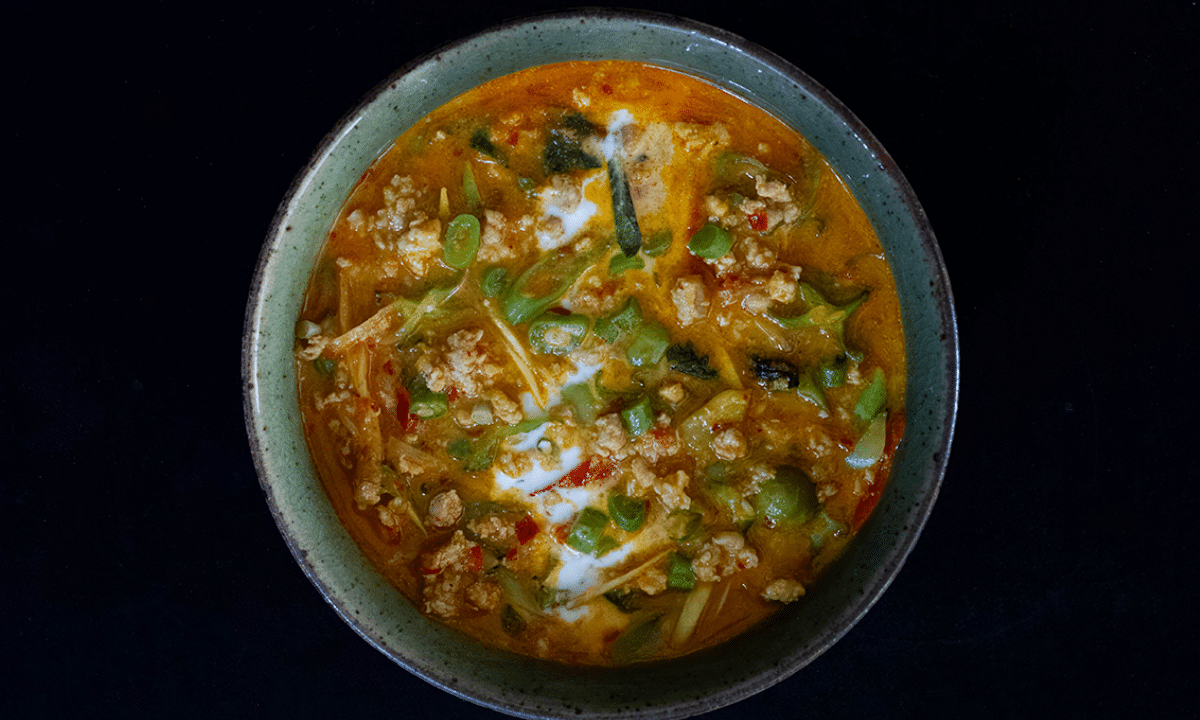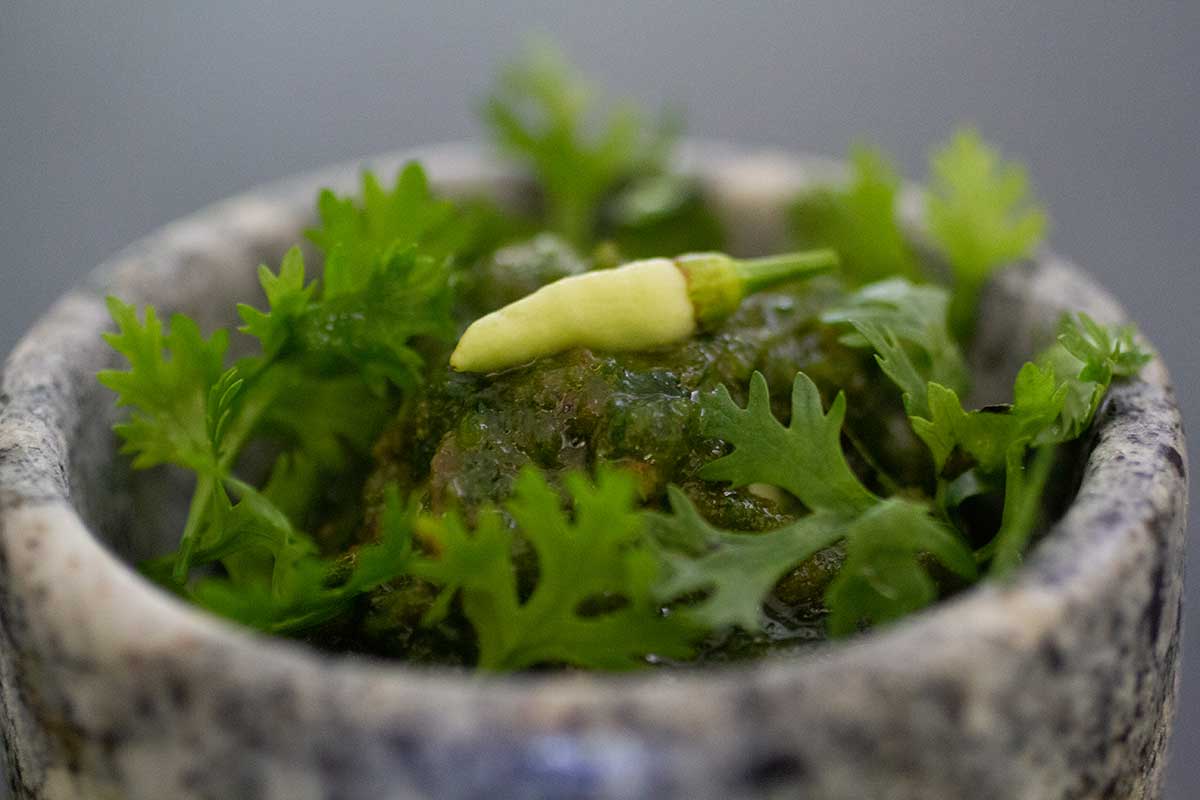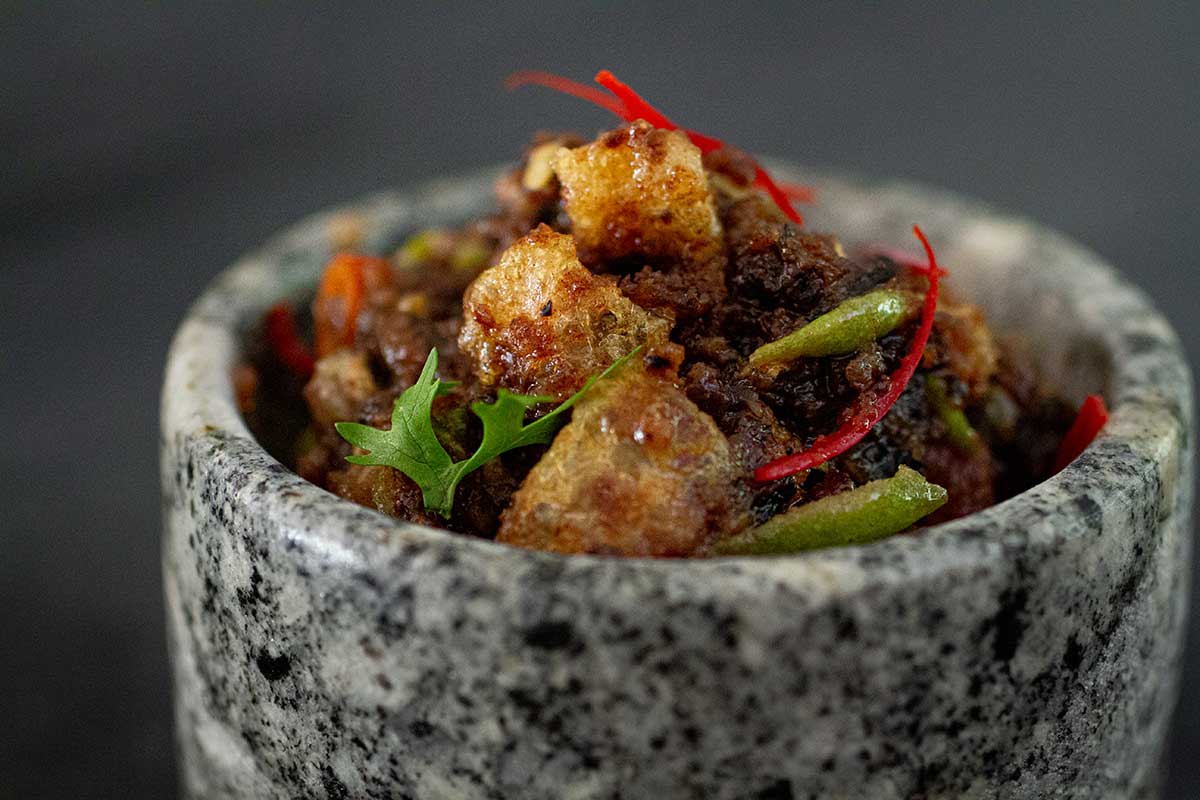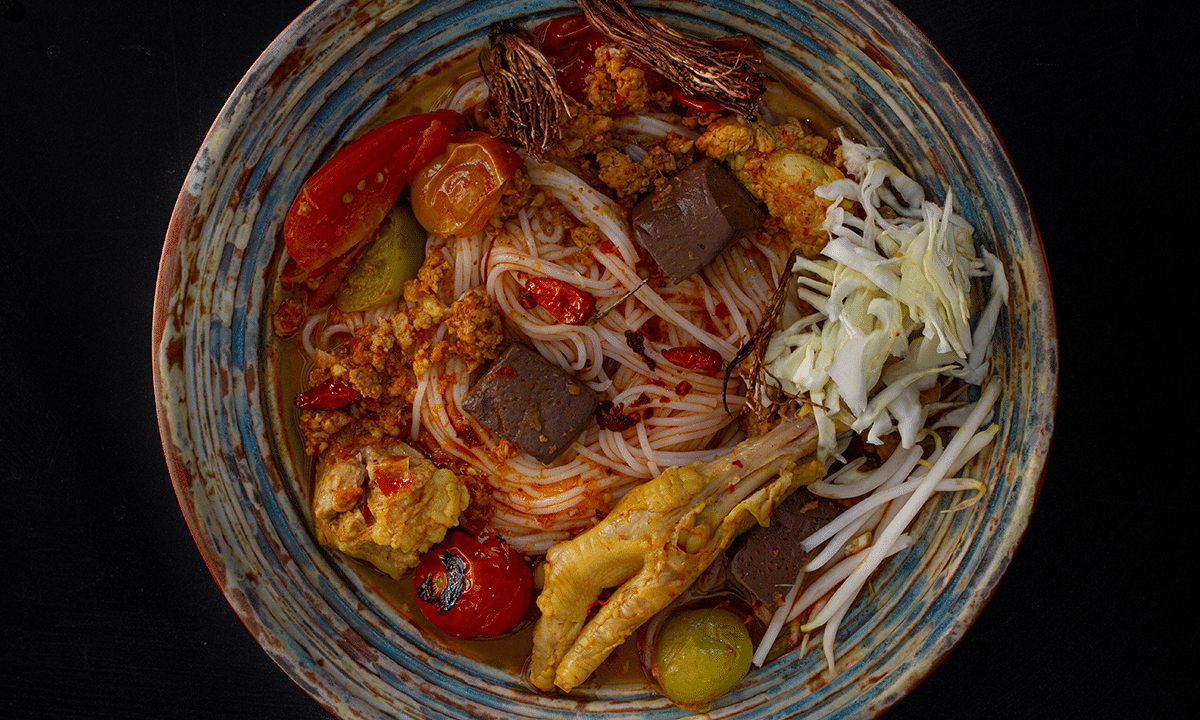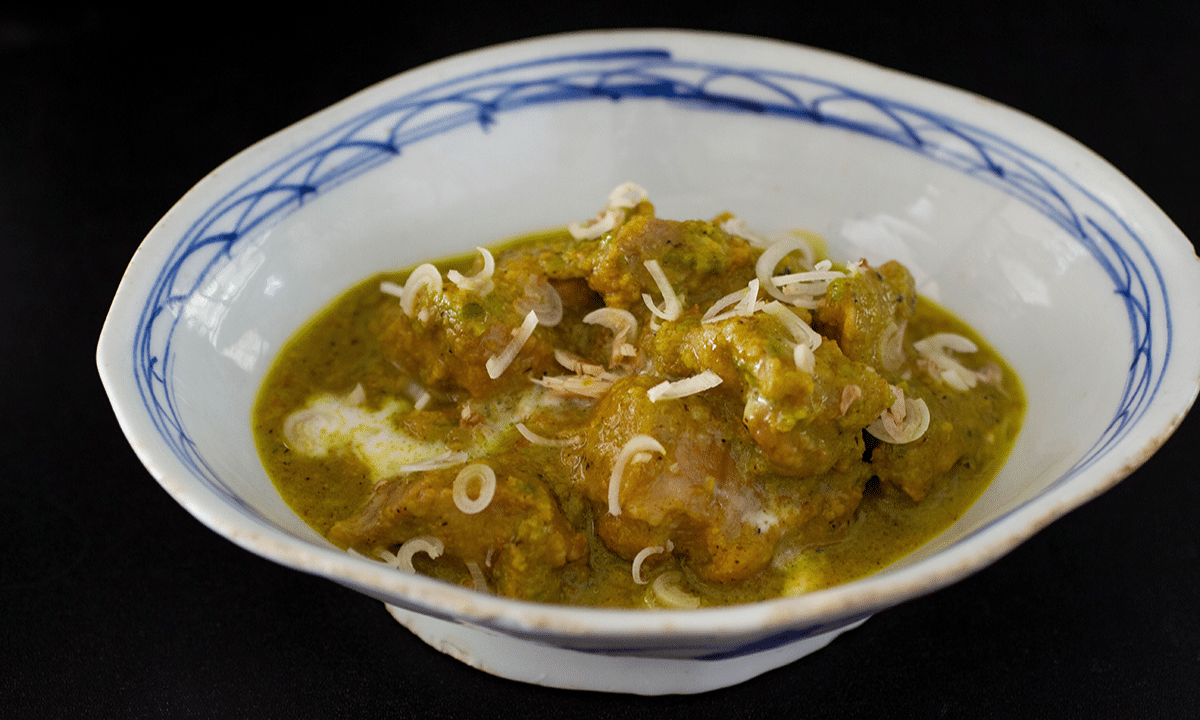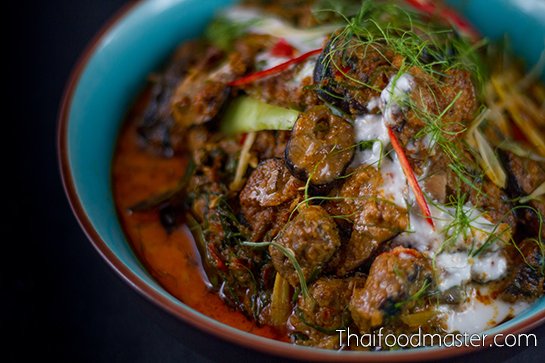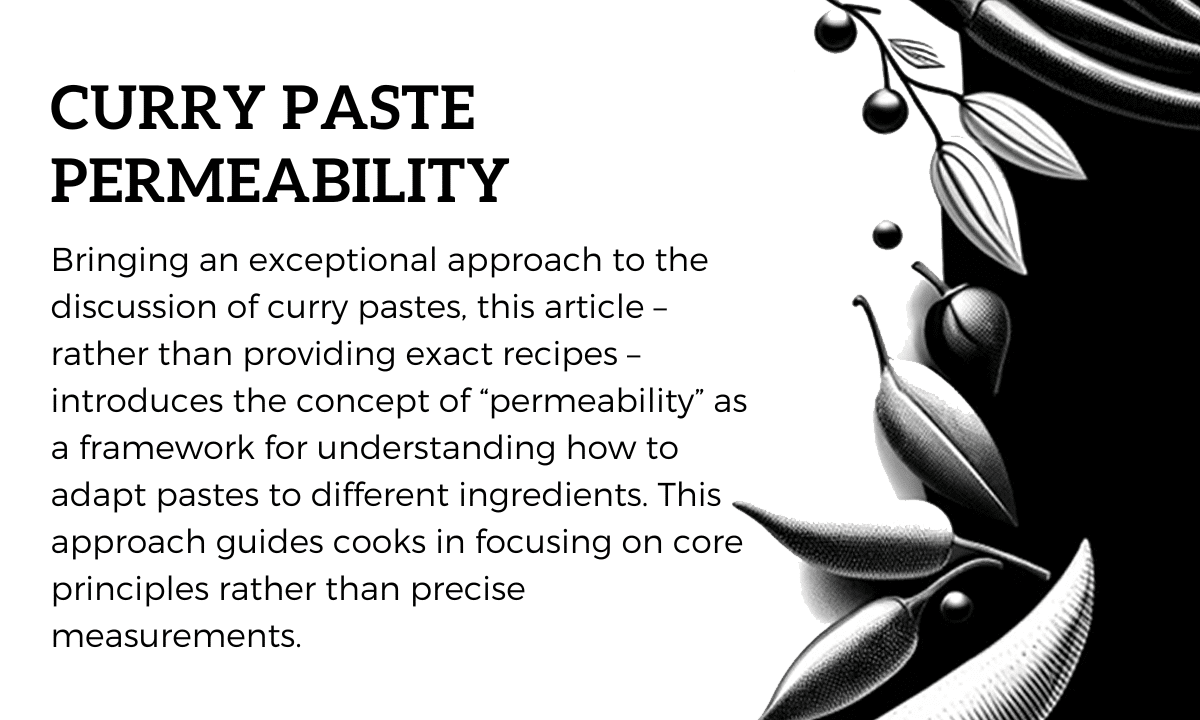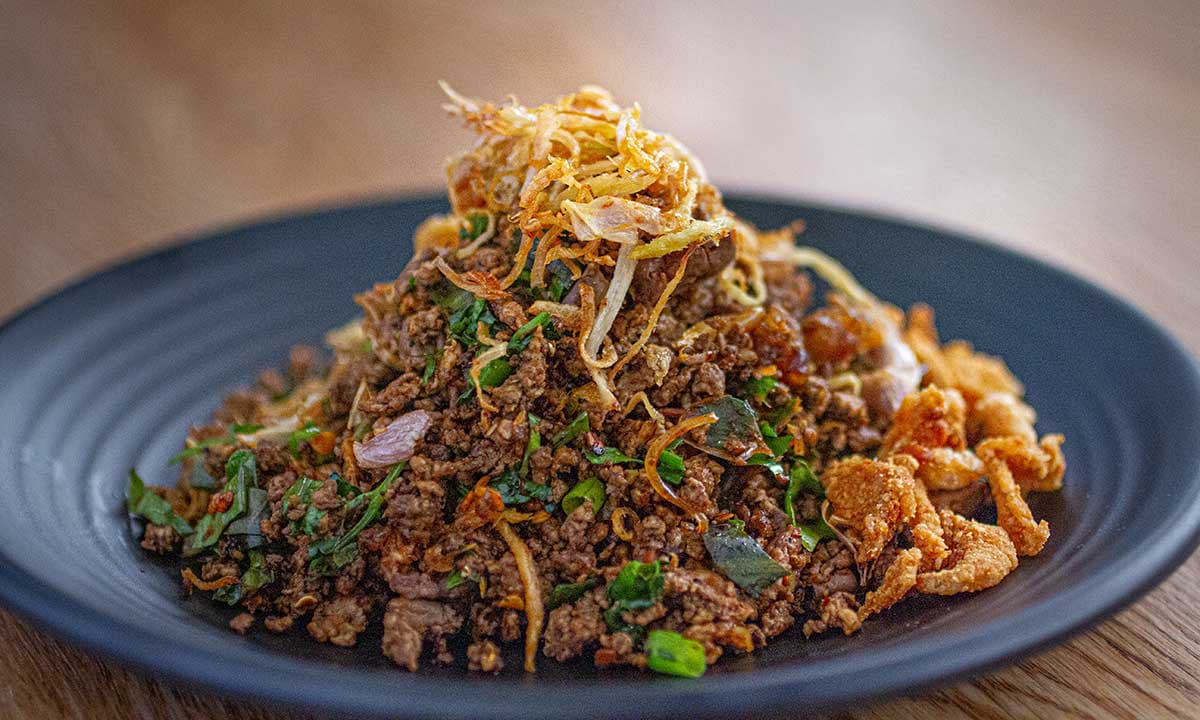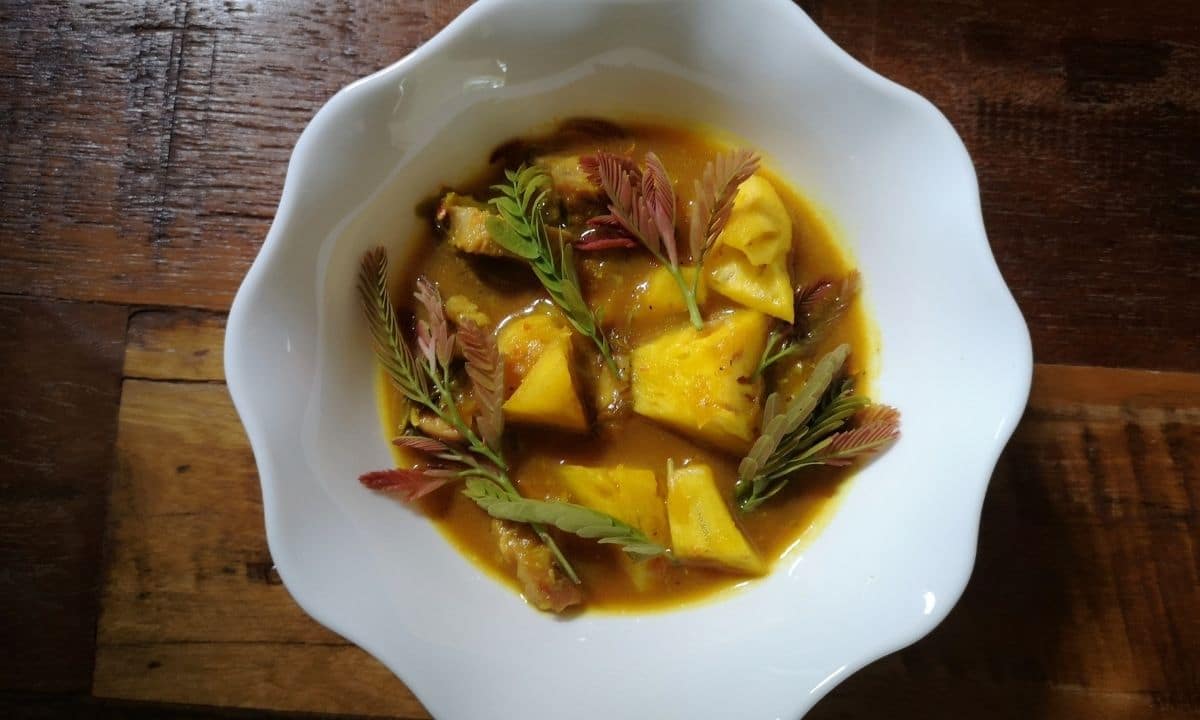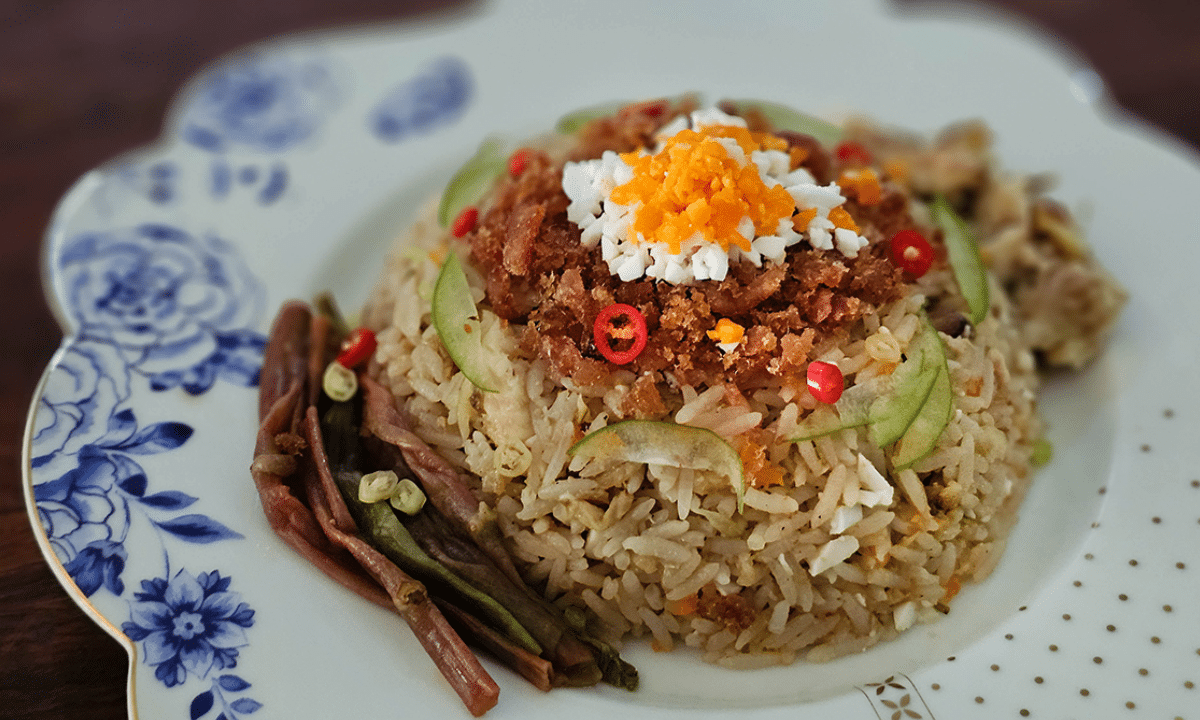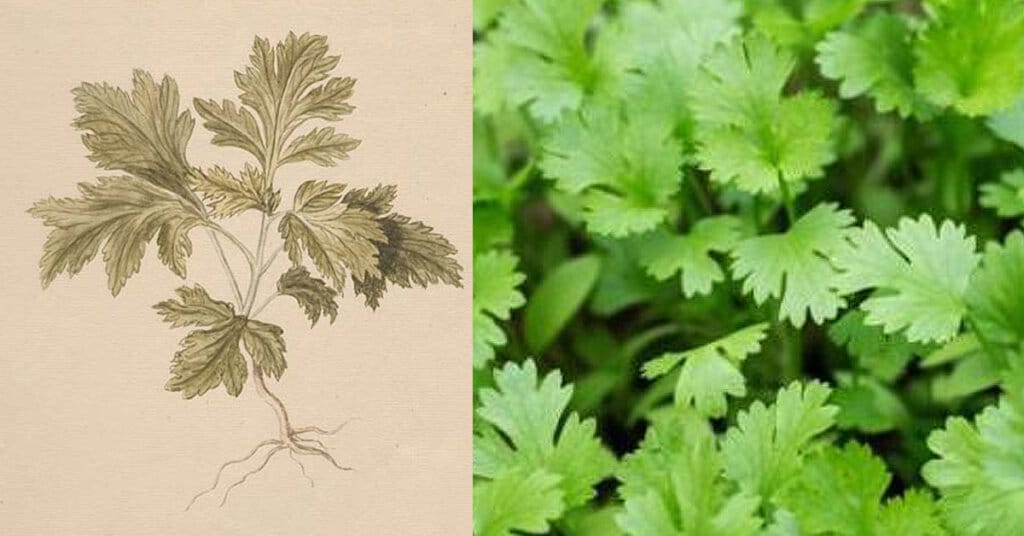
[expander_maker id=”3″]
Local names: ผักชีไทย (phak chee thai), ผักหอม (phak haawm), ยำแย้ (yam yaae), ผักหอมป้อม (phak haawm bpaawm), ผักหอมผอม (phak haawm phaawm), ผักหอมน้อย (phak haawm naawy).
Coriander is an annual herb in the family Apiaceae. It is also known as Chinese parsley, dhania, or cilantro.
All parts of the plant are edible. The roots, fresh leaves, and dried seeds are used in Thai cooking.
Most people perceive coriander as having a tart, lemon/lime taste, but to nearly a quarter of those surveyed, the leaves taste like dish soap, linked to a gene which detects some specific aldehydes that are also used as odorant substances in many soaps and detergents. [1]Wikipedia
Coriander is native to regions spanning from Southern Europe and Northern Africa to Southwestern Asia. [2]Wikipedia
It is a soft plant growing to 50 cm (20 in) tall. The leaves are variable in shape, broadly lobed at the base of the plant, and slender and feathery higher on the flowering stems. [3]Wikipedia
The flowers are borne in small umbels, white or very pale pink, asymmetrical, with the petals pointing away from the center of the umbel longer (5–6 mm or 3⁄16–1⁄4 in) than those pointing toward it (only 1–3 mm or 1⁄16–1⁄8 in long). The fruit is a globular, dry schizocarp 3–5 mm (1⁄8–3⁄16 in) in diameter. Pollen size is approximately 33 μm (0.0013 in). [4]Wikipedia
Coriander grows wild over a wide area of Western Asia and Southern Europe, prompting the comment: “It is hard to define exactly where this plant is wild and where it only recently established itself.” Recent works suggested that coriander accessions found in the wild in Israel and Portugal might represent the ancestor of the cultivated coriander. They have low germination rates and a small vegetative appearance. The accession found in Israel has an extremely hard fruit coat. [5]Wikipedia
Fifteen desiccated mericarps were found in the Pre-Pottery Neolithic B level (six to eight thousand years ago) of the Nahal Hemar Cave in Israel, which may be the oldest archaeological find of coriander. [6]Wikipedia
About 500 millilitres (17 US fl oz) of coriander mericarps was recovered from the tomb of Tutankhamen, and, because this plant does not grow wild in Egypt, Zohary and Hopf interpret this find as proof that coriander was cultivated by the ancient Egyptians. [7]Wikipedia
The Ebers Papyrus, an Egyptian medical text dated to around 1550 BC, describes coriander’s medicinal and culinary uses. [8]Wikipedia
Coriander seems to have been cultivated in Greece since at least the second millennium BC. One of the Linear B tablets recovered from Pylos refers to the species as being cultivated for the manufacture of perfumes; it apparently was used in two forms: as a spice for its seeds and as a herb for the flavour of its leaves. [9]Wikipedia
This appears to be confirmed by archaeological evidence from the same period; the large quantities of the species retrieved from an Early Bronze Age layer at Sitagroi in Macedonia could point to the cultivation of the species at that time. [10]Wikipedia
Later, coriander was mentioned by Hippocrates (c. 400 BC), as well as Dioscorides (65 AD). [11]Wikipedia
The information on this website has been compiled from reliable sources, such as reference works on medicinal plants. It is not a substitute for medical advice or treatment and Thaifoodmaster does not purport to provide any medical advice.
[/expander_maker]
References
